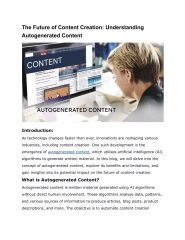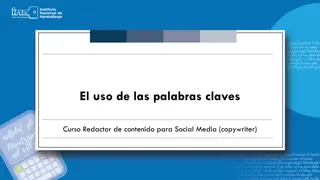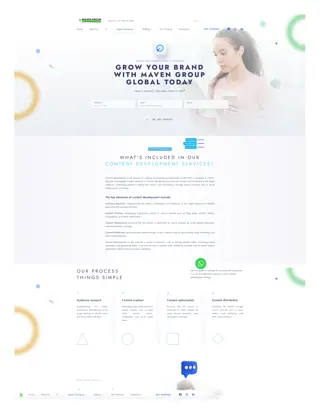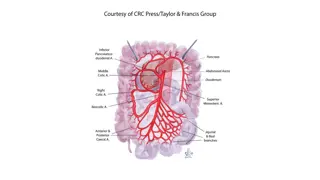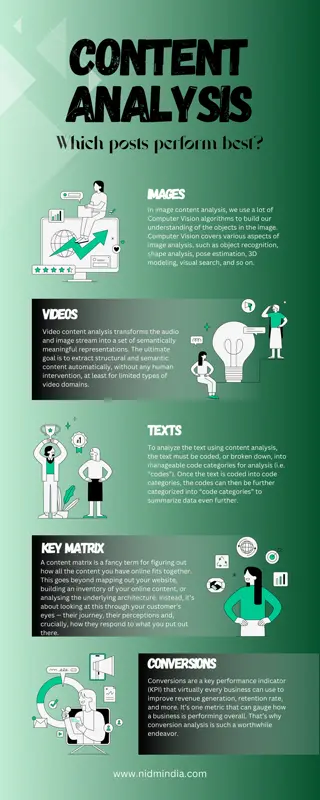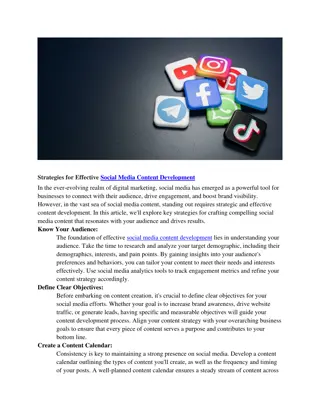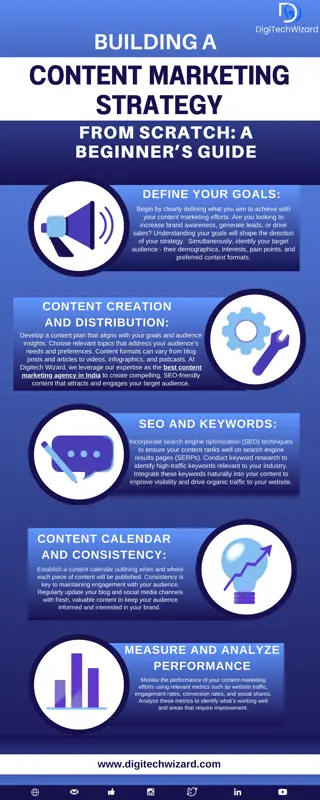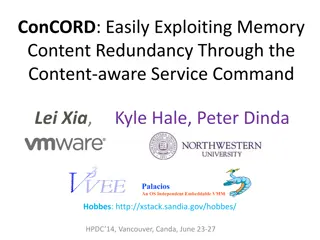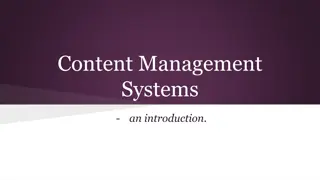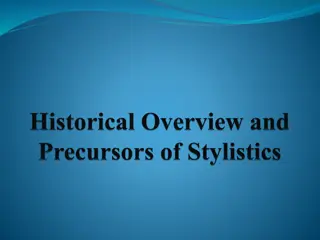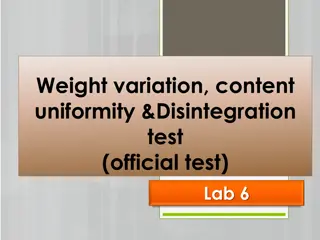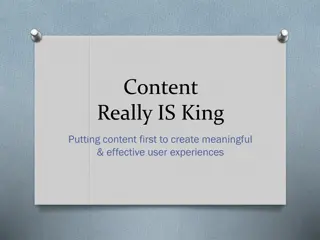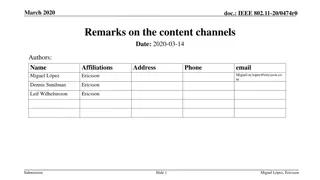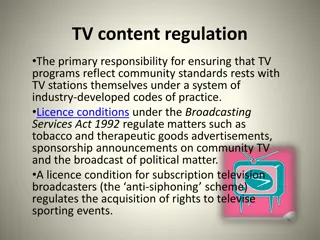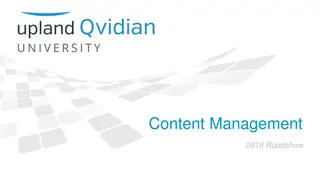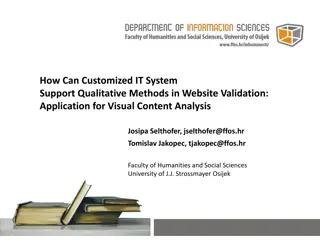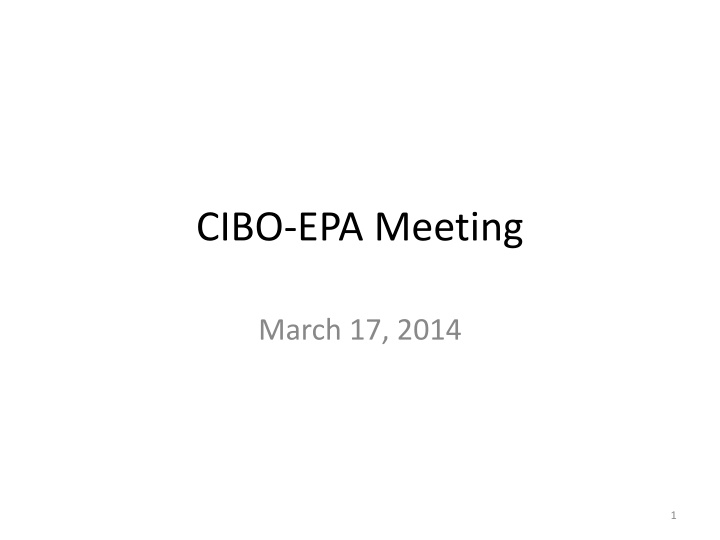
Coal Boiler Emissions Comparison and Compliance Issues
Explore the comparison of CO emissions from coal-fired boilers under different regulatory frameworks, highlighting concerns with continuous compliance and operational conditions. The presentation delves into emissions data, regulatory approaches, and potential impact on compliance measures.
Download Presentation

Please find below an Image/Link to download the presentation.
The content on the website is provided AS IS for your information and personal use only. It may not be sold, licensed, or shared on other websites without obtaining consent from the author. If you encounter any issues during the download, it is possible that the publisher has removed the file from their server.
You are allowed to download the files provided on this website for personal or commercial use, subject to the condition that they are used lawfully. All files are the property of their respective owners.
The content on the website is provided AS IS for your information and personal use only. It may not be sold, licensed, or shared on other websites without obtaining consent from the author.
E N D
Presentation Transcript
CIBO-EPA Meeting March 17, 2014 1
Agenda- Subpart DDDDD Focus Coal fired boiler CO emissions relative to compliance and MATS approach Startup/shutdown requirements and major issues Potential impact and intentions relative to UPL application and remand Remand-reconsideration-compliance concerns 2
CO DDDDD vs. MATS Essentially no difference in non-dioxin organic HAP emissions from coal fired ICI boilers compared to EGU boilers Basic combustion methods, fuels, operation are similar relative to non-dioxin organic HAP emissions Total emissions as TPY are much higher for EGU coal fired boilers than for ICI coal fired boilers Yet DDDDD imposes CO limits whereas MATS uses work practice approach 3
Issues with Boiler MACT CO Approach Concerns with asserting continuous compliance under all operating conditions CO emissions are known to vary with operating conditions and fuel quality (e.g., especially moisture and fines with stokers) over time 30 day rolling average for CEMS may not cover issues Some boilers with inherent design limitations that impact CO emissions 4
Data Availability EPA made publicly available the following: Utility MATS proposed rule dated May 3, 2011 Incorporating a work practice approach to address non- dioxin organic HAP Results of the EPA pilot scale Multipollutant Control Research Facility testing referenced in the MATS proposed rule Both arose after the close of comment period for the June 4, 2010 Boiler MACT Proposed Rule (August 23, 2010) 5
Combined ICI Coal Boiler and EGU Coal Boiler Data 8
Conclusions A work practice approach as used for MATS coal fired boilers is equally applicable to ICI coal fired boilers Because the MATS work practice approach was first noticed after comment closing for the 2010 Boiler MACT Proposed rule, that approach was not available for public comment on the Boiler MACT rule Therefore, the work practice approach for coal fired boiler non- dioxin organic HAP should be open for EPA reconsideration and included within EPA s reconsideration of non-dioxin organic HAP emissions and CO limits This approach would retain all issues relative to coal fired ICI boiler CO within the reconsideration process and not split it between Court Review Briefs and reconsideration Resulting in a more coherent and efficient regulatory/legal process EPA could evaluate a mix of work practices as an alternative to CO limits Periodic tune-ups with ongoing continuous O2 monitoring O2 trim systems, which provide continuous combustion optimization 10
Operational Problems As discussed in CIBO (and others ) reconsideration petitions, there are major problems with the final rule startup/shutdown approach EPA s MATS approach using percent load and time is reasonable 25% load for 4 hours following a cold start would work for a high percent of ICI units Those with remaining issues could be allowed to work out a unit-specific procedure with the permitting authority Examples of problems and recommended solutions provided separately & summarized in following slides These issues need to be addressed soon in the reconsideration process- there are serious concerns at the regulated sources whether additional provisions need to be provided 12
Scenario- startup on clean fuel, engage non-listed controls prior to adding solid fuel Controls- Any Potential compliance issue Clean fuel availability CO issue with transition from gas/liquid to solid 30 day average depends on compliance margin Suggested solution Expand clean fuel list Additionally, include all other Gas 1 fuels; biodiesel; fuels meeting HCl, Hg, TSM by fuel analysis; other clean fuels per permitting authorities Provide adequate startup time to cover transition from startup fuel to primary solid fuel per slides below 13
Scenario- Startup on solid fuel Controls- Dry Potential compliance issues Need adequate flue gas temperature and low enough O2 prior to ESP energization Need time within startup period for combustion unit firing primary fuel(s) and all exempted air pollution controls to reach stable conditions Need startup definition to accommodate units with heat or steam upon main fuel ignition Differentiate between cold start (more time) & hot restart (less time) Suggested solutions Include ESPs in Table 3, item 5- exempted controls to be started as expeditiously as possible End startup when boiler/PH has continuously maintained 25% of maximum output at normal output conditions for 4 hr for cold start/1 hr for hot restart and all control devices in stable operation OR boiler/PH operating above minimum operationally stable output flow rate/pressure for minimum time per site-specific start-up plan 14
Scenario- Startup on solid fuel Controls- Wet Potential compliance issues Need time within startup period for combustion unit firing primary fuel(s) and all exempted air pollution controls to reach stable conditions Differentiate between cold start (more time) & hot restart (less time) Could have problems meeting 30 day rolling CO CEMS limit if inadequate startup period is allowed Suggested solutions End startup when boiler/PH has continuously maintained 25% of maximum output at normal output conditions for 4 hr for cold start/1 hr for hot restart and all control devices in stable operation OR boiler/PH operating above minimum operationally stable output flow rate/pressure for minimum time per site-specific start-up plan 15
Scenario- Startup on solid fuel Controls- Dry or Wet Potential compliance issues Need to address units that share common control device and startup sequentially or when one unit is starting up and one or more units is already in normal operation Could have problems meeting 24 hour block opacity limit or 30 day rolling CO CEMS limit if inadequate startup period is allowed Suggested solutions Sequential startup: End startup when the last boiler/PH to start has continuously maintained 25% of maximum output at normal output conditions for 4 hr for cold start/1 hr for hot restart and all control devices in stable operation OR when the last boiler/PH is operating above minimum operationally stable output flow rate/pressure for minimum time per site-specific start- up plan Non-sequential startup: The boiler/PH initiating startup would get a startup period with end of startup depending on hot/cold startup 16
Scenario- Unit begins startup, reaches minimum stable load, but equipment problem results in failed startup Controls- Any Potential compliance issues All of the above Suggested solutions Ensure entire period is considered startup, even if reach the minimum load threshold 4 hour period must be continuous To allow for recovery from decrease in temperatures, etc., to stable conditions Would not be able to continually cycle in and out of the startup period Once 25% load is reached for some time period, it becomes a hot restart 17
Scenario- Lose solid fuel feed; delay or lack of auxiliary fuel; wet fuel can increase O2 and trip ESP, which trips fuel; fuel feed problems causing interruptions Controls- Wet Potential compliance issues Shutdown not completed if unit continues to supply useful output until feed is restored Not normal operation and not always malfunction May be issue with 30-day CO CEMS limit depending on compliance margin and length of event Suggested solutions Shutdown definition to accommodate return of fuel prior to total loss of steam/heat output Cannot be forced to take unit totally down before reinitiating startup End of period would be a hot restart with startup work practices applying Revise to read: Shutdown ends when there is both no steam or heat being supplied and no fuel being combusted in the boiler or process heater; or when startup is initiated by reintroducing fuel to the boiler or process heater after fuel feed has been halted. 18
Scenario- Lose solid fuel feed; delay or lack of auxiliary fuel; wet fuel can increase O2 and trip ESP, which trips fuel; fuel feed problems causing interruptions Controls- Dry Potential compliance issues Shutdown not completed if unit continues to supply useful output until feed is restored Not normal operation and not always malfunction ESP trip is required upon Master Fuel Trip May be issue with 24 hour block opacity limit or 30-day CO CEMS limit depending on compliance margin and length of event Suggested solutions Shutdown definition accommodate return of fuel prior to total loss of steam/heat output Cannot be forced to take unit totally down before reinitiating startup End of period would be a hot restart with startup work practices applying Revise to read: Shutdown ends when there is both no steam or heat being supplied and no fuel being combusted in the boiler or process heater; or when startup is initiated by reintroducing fuel to the boiler or process heater after fuel feed has been halted. Include ESPs in Table 3, item 6 exempted APCs not required to be operated during a shutdown 19
Scenario- Per the shutdown definition, shutdown begins upon halting fuel feed to the boiler/PH; fuel can still be burning in the boiler/PH Controls- Any Potential compliance issues Current definition: Shutdown means the cessation of operation of a boiler or process heater for any purpose. Shutdown begins either when none of the steam from the boiler is supplied for heating and/or producing electricity, or for any other purpose, or at the point of no fuel being fired in the boiler or process heater, whichever is earlier. Shutdown ends when there is no steam and no heat being supplied and no fuel being fired in the boiler or process heater. This can be interpreted that shutdown does not begin until no fuel is burning or no steam/heat is being supplied In some designs, fuel continues to burn in the unit after fuel feed stops Suggested solution Clarify that fuel being fired in this case means fuel being fed to the combustion unit 20
Scenario- More than 1 unit vents to a wet control device; 1 unit shuts down and other(s) remain operating Controls- Any Potential compliance issues Wet scrubber pressure drop can depend on flow through the scrubber With fewer units operating, operating parameter limits established during the performance test with both units in operation may not be achievable Suggested solution Unsure how to address in the rule Submit alternate monitoring request and establish different operating scenarios? e.g., alternate operating limits with fewer units in operation Similar issue to use of gas fuel firing in a solid fuel fired boiler where emission controls are not needed 21
Path Forward EPA intentions to address startup/shutdown issues? Any further information needed? 22
UPL Implications Major concerns with delays and potential standard changes relative to compliance dates EPA intentions? 23
Remand-Reconsideration-Compliance Concerns If any emission limit changes are contemplated, notice and comment is required along with extended compliance timing Compliance planning and capital investment must consider all regulatory requirements together ANY changes upset the process and cause timing, effort, and cost problems 24

